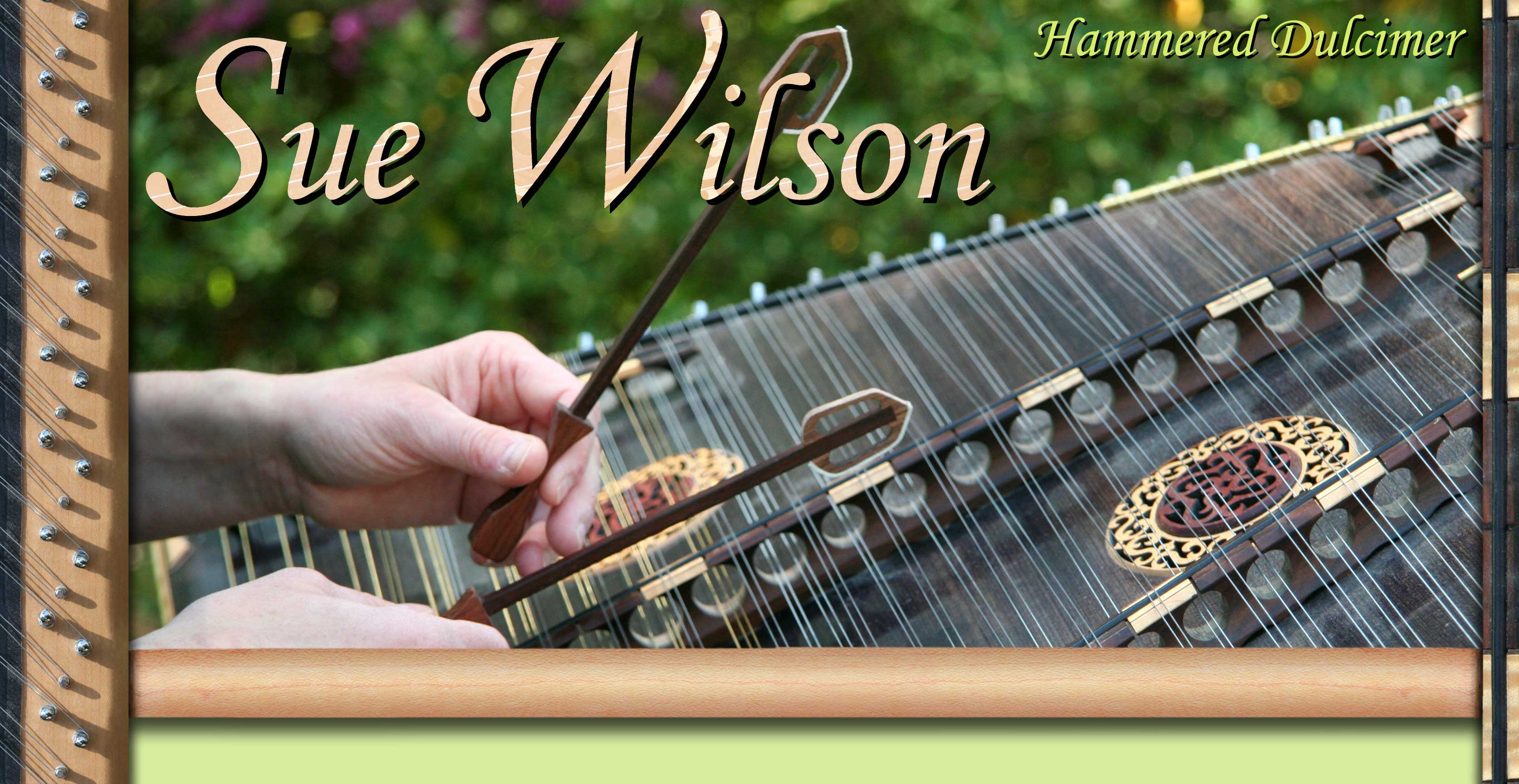Sue Wilson teaches the hammered dulcimer to students of all ages and skill levels and is available to teach in a workshop setting.
Sue draws on personal experience when developing workshop topics. She has played and performed with various ensembles over the years, which has provided her the opportunity to learn lots of tunes and to develop skills in playing harmonies and back-up. She has shared her music with the homebound and hospitalized through volunteer work with Hospice since 2006, and through her church's pastoral care team prior to that. She attends workshops regularly herself, because there's always something new to learn!
Getting Around on the Hammered Dulcimer
One of the simplest ways to vary an arrangement is to change octaves. But “simple” doesn’t necessarily mean “easy” to execute! Like so many things, it must be practiced. Learn to use the entire range of your instrument when arranging a tune. Learn how to transition from one octave to another smoothly and with intention. Adv Beg/ Int
The Power of One
Who would guess that adding one note could so effectively vary your arrangement? Learn to fill empty space with a drone note, then change it up by doing something rhythmic. Adv Beg/ Int
It’s All About the Chords
Whether your goal is to arrange a new tune, develop a rhythmic back-up, or improvise during a jam, the chord progression is key to your success. Learn to identify what key a tune is in and what chords are available within that key. Practice using root position arpeggio patterns to follow a suggested chord progression. Int/Adv
It’s All About the Rhythm
• Playing BackUp for Reels
Playing BackUp for Reels
• Playing BackUp for Waltzes
Playing BackUp for Waltzes
• Playing BackUp for Jigs
Playing BackUp for Jigs
Choose one category - reels, waltzes, or jigs - that will be the focus of the class. One of the main goals of playing backup (besides having fun!) is to provide rhythmic support for the tune. Different types of tunes require different rhythms. Learn different rhythmic patterns that will work for specific types of tunes. Int/Adv
Playing syncopated rhythms
What is syncopation? How do you play it? Practice musical rhythms that shift the accent from what is expected to be the “strong” beat to what would normally be considered the “weak” beat. Adv Beg/Int
Hot Fiddle Tunes
What gives a fiddle tune the driving energy that makes people want to dance? Learn how to give your music the lift that gets toes tapping. Practice shifting accents from the 1 and 3 beats to the 2 and 4 beats in reels. You'll be ready to rock the jam! Int/Adv
2-Chord Tunes
Lots of tunes are made up of only 2 chords, so once you master these ideas you’ll be ready to jam on many different tunes! Learn how to create ascending and descending bass lines, using chord inversions, to fit these 2-chord progressions. Use these ideas in arranging or playing backup. Int/Adv
Understanding Modes - A Practical Guide for HD Players
Who cares about modes? Why do hammered dulcimer players need to know about modes? Knowing the mode of a tune helps you determine WHERE the tune will be played on the instrument and WHAT CHORDS will likely be used. Learn to recognize common modes. Practice by looking at real tunes. Int/Adv
Playing for Folks who are Homebound/Hospitalized
Many of us feel the need to share our music. Playing for those who are homebound or living in assisted-living/nursing-care facilities can be a rewarding way to do this. This will be a discussion class, in which we talk about how to find people to play for, what types of tunes should be on the play list, how one should behave at bedside, what people expect from the “musician”, how to include family and other care givers, and other pertinent information. Come with questions and stories! All skill levels
Tunes People Know – and Maybe You Should, Too!
• Hymns
Hymns
• American Folk Tunes/Popular Music
American Folk Tunes/Popular Music
• Stephen Foster Tunes
Stephen Foster Tunes
Choose one category that will be the focus of the class. The tunes selected for these repertoire classes have come out of Sue’s work with Hospice and from playing for elders who live in residential care facilities. This is what Sue knows for sure: People like to hear something familiar. They aren’t much impressed by a fancy arrangement of some unknown Celtic tune. They would just as soon hear, “Row, Row, Row Your Boat”! Learn some tunes that, in Sue’s experience, get consistently positive responses from just regular folks. Adv Beg and Up
Workshop topics are listed below. Each topic may be customized to fit different length sessions. Although suggested skill levels are noted, many of the lessons may be taylored to fit a range of abilities. Have a topic in mind that you don't see here? Contact Sue. She's open to suggestions! Schedule Sue for your next festival or special event by calling (919) 542-5854 or writing sswilson123@gmail.com.



